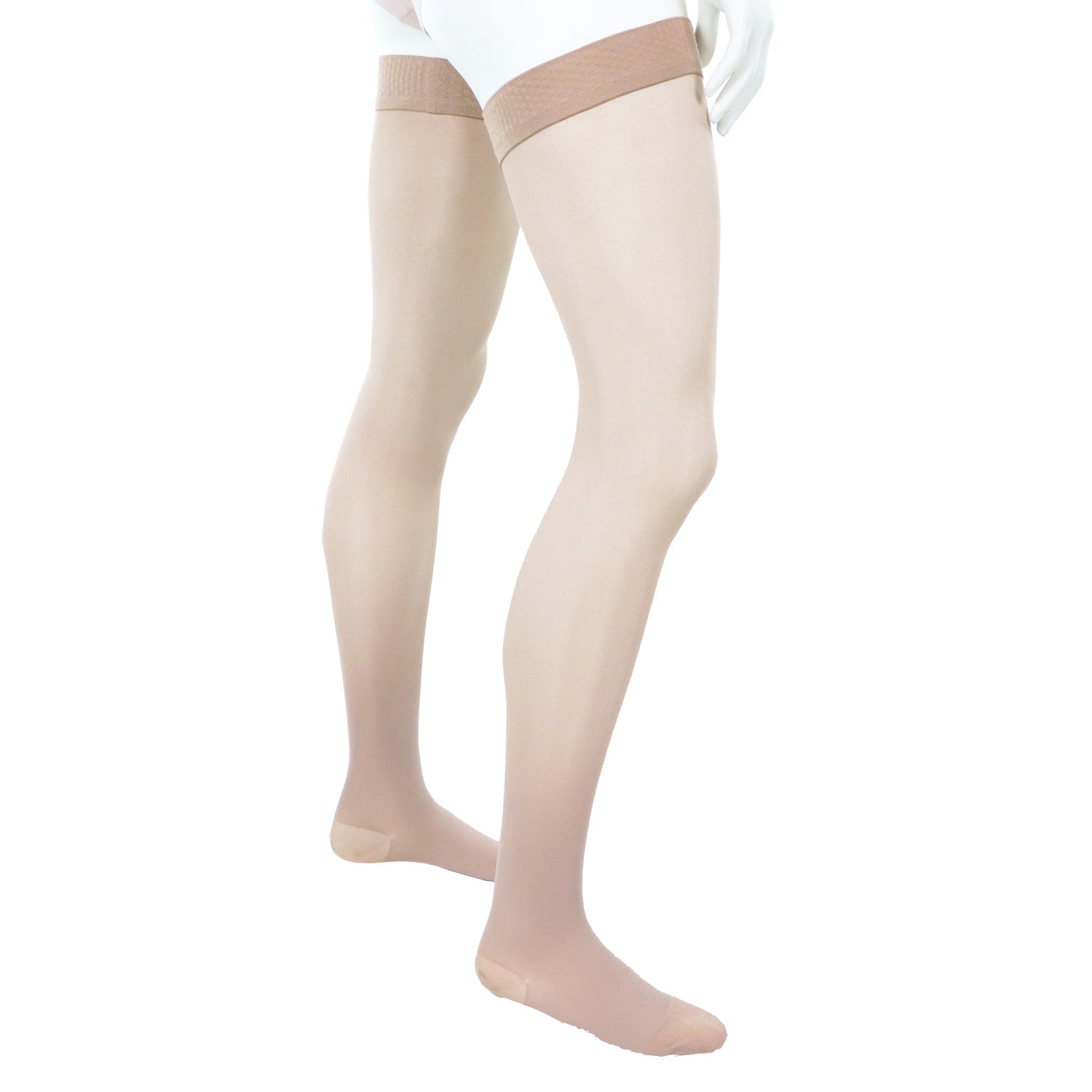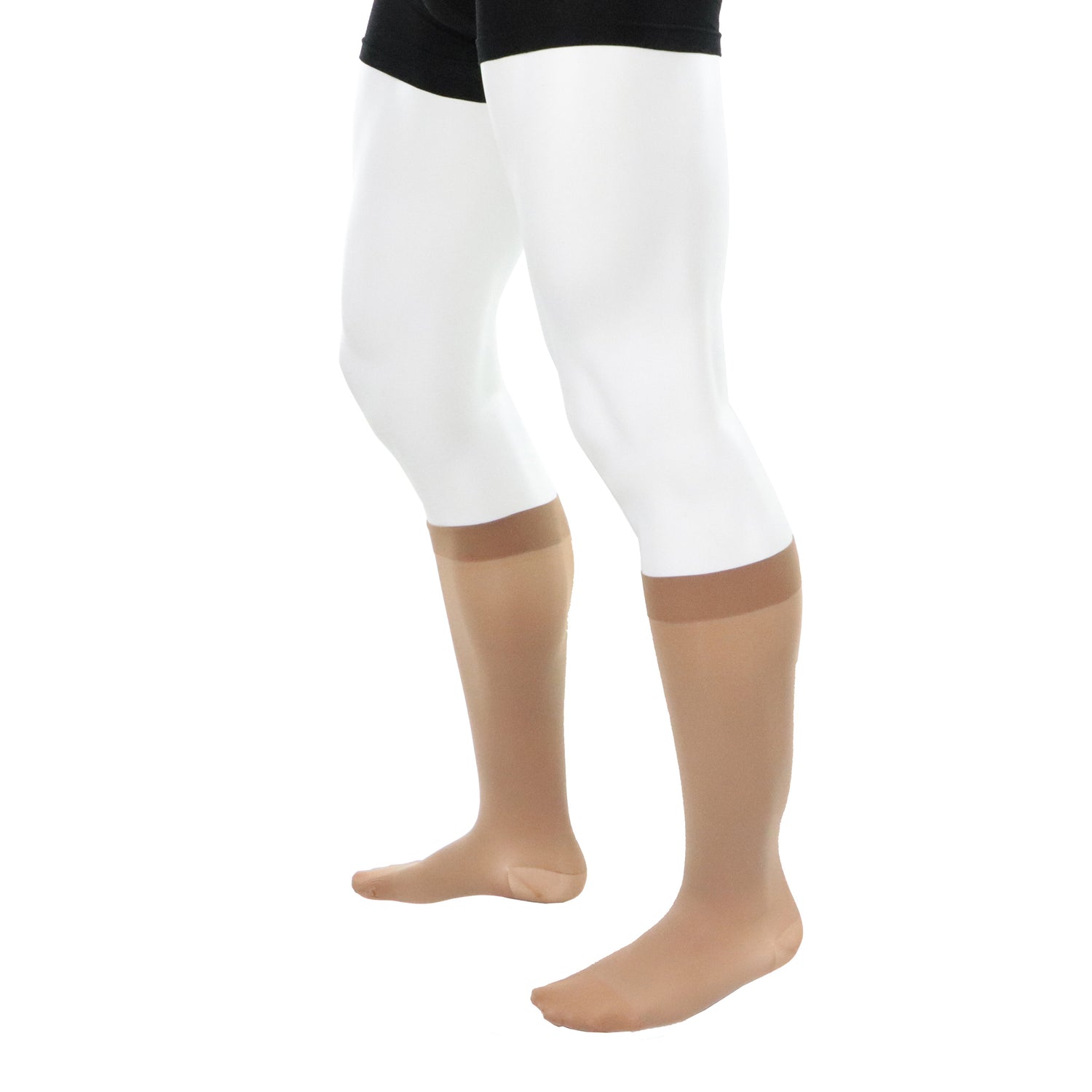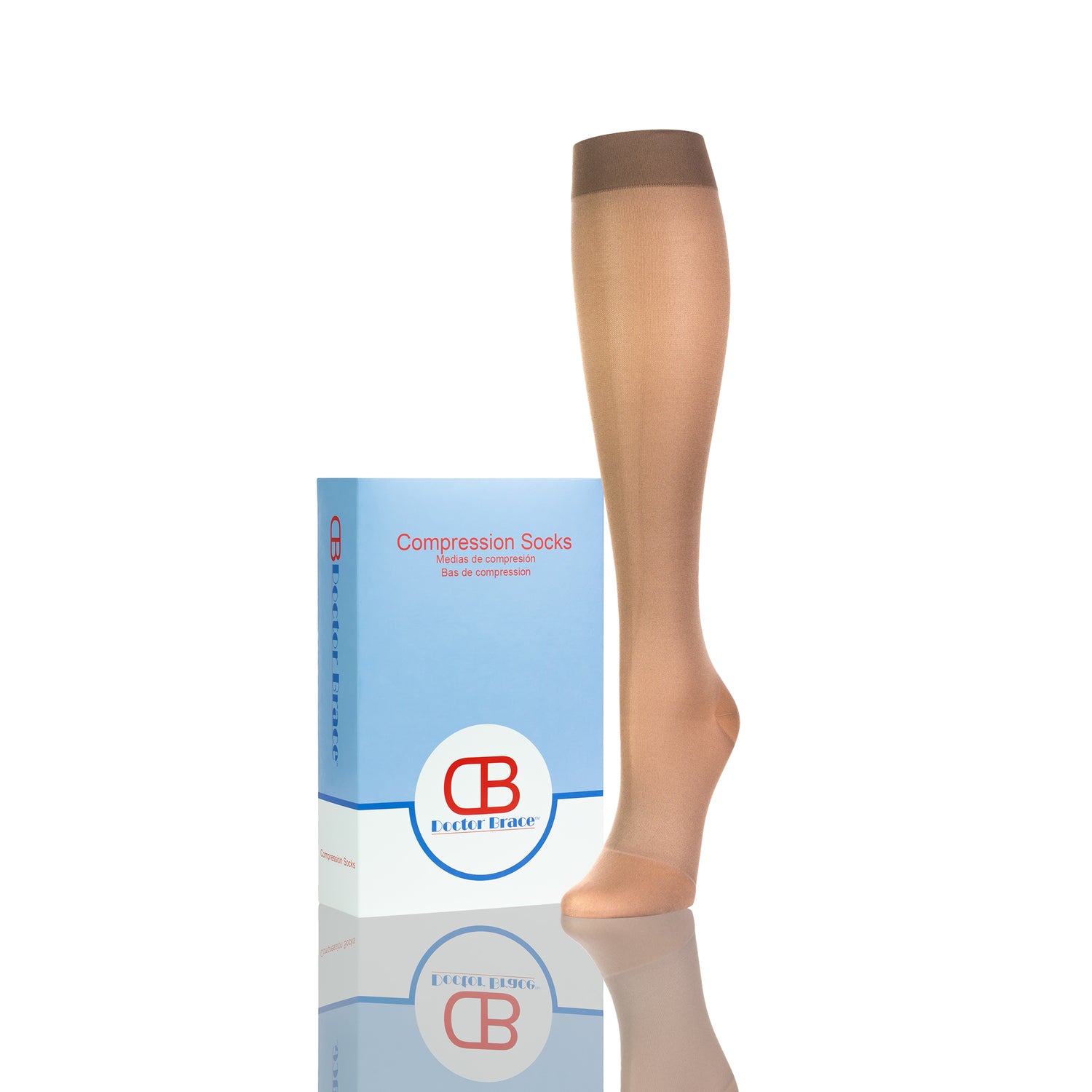Overview
Like so many other people today, do you suffer from venous insufficiency in your legs?
You are no exception! Indeed, in industrialized countries, it is one of the most common chronic diseases.
It causes heavy, swollen, painful legs, varicose veins, and even more severe circulatory disorders.
This text offers a complete overview of chronic venous insufficiency (CVI).
More specifically, it describes this venous disease. It also presents its symptoms, causes, stages, treatments, etc.
What's venous insufficiency?
To understand what venous insufficiency is, we first explain how veins work, in the legs or elsewhere in the human body:
You should know that in the veins of the legs, there are small anti-reflux valves. These venous valves have the function of preventing the blood from stagnating.

But if they no longer work properly, the venous circulation will slow down, and the blood will flow back.
This abnormality in the leg veins is called chronic venous insufficiency or CVI.
In simpler words, venous insufficiency can be described as the inability of the blood to go up adequately toward the heart.
Chronic venous insufficiency symptoms
Knowing the symptoms of venous insufficiency earlier is essential. It allows for putting in place the appropriate treatment as quickly as possible.
Early treatment of chronic venous insufficiency helps avoid complications such as:
- Varicose veins
- Superficial phlebitis
- Or deep venous thrombosis

Venous insufficiency symptoms can vary in intensity and frequency, among these:
- Edema in the legs (swollen ankles or legs): This appears during the day, more often after long standing or sitting without moving. Legs and ankles become less swollen at night and upon awakening in the morning
- Fatigue and aching in the legs
- Itchy skin on legs or feet: This phenomenon is called venous ulcers (stasis ulcers)
But be aware that if chronic venous insufficiency is not treated in time, the pressure and swelling will increase until surface vessels, called superficial veins, burst.
In this case, the skin takes on a reddish-brown color. Also, it becomes extremely sensitive.
These burst veins can also cause local tissue inflammation and even internal tissue damage. In the worst case, it leads to ulcers or even open wounds on the skin.

These venous ulcers, called venous stasis ulcers, can be challenging to heal and become even infected. This infection can then spread to surrounding tissues.
You should also know that venous insufficiency is often associated with varicose veins in the legs.
Causes and risk factors
The leading causes of venous insufficiency in the legs are dysfunctional venous valves or loose vein walls. In addition, a blood clot can also cause a CVI in the leg.
What causes venous insufficiency?
- In healthy veins, the blood flow is continuous. It goes from the limbs of the body to the heart. And as we have seen, the valves present in the veins prevent the return of blood. If these venous valves are dysfunctional, i.e., they do not close completely, the consequence would be blood reflux
- A blood clot will cause a blockage in the veins. Suddenly, the blood accumulates under the blood clot and causes chronic venous insufficiency in the legs
- In the case of varicose veins, the venous valves are altered or even damaged. The blood will then flow from the venous valve to accumulate in a superficial vein. Over time, the vein swells, and stagnant blood becomes more apparent through the skin
- In addition, muscle weakness can sometimes contribute to low blood pressure. This phenomenon will therefore accentuate, promote or cause chronic venous insufficiency
Risk factors
The aggravating factors that can increase the risk of getting chronic venous insufficiency are multiple. Among these:
- Patient sex is an aggravating factor in the sense that venous insufficiency is more present in women than in men
- Age: chronic venous insufficiency most often occurs after the age of 50
- Pregnancy
- Obesity
- Being a smoker
- Family history
- Phlebitis
- Physical inactivity
Other identified risk factors include
- Muscle failure
- Maintain the same position for long hours without moving (standing or sitting).
Chronic venous insufficiency: stages
Stages of chronic venous insufficiency are six in number. They differ from each other depending on the symptoms experienced.

Here is an overview of the different stages of chronic venous insufficiency:
|
Stage |
Symptoms |
|
Early venous insufficiency |
|
|
Stage 0 |
|
|
Stage 1 |
|
|
Stage 2 |
|
|
Chronic venous insufficiency - CVI |
|
|
Stage 3 |
|
|
Stage 4 |
|
|
Stage 5 |
|
|
Stage 6 |
|
Chronic venous insufficiency treatments
The venous insufficiency treatment to undergo depends on the patient's condition.
This is why different chronic venous insufficiency treatments exist. Which one to follow will depend primarily on the venous disease stage.
Treatment 1: Improving lifestyle
The first step in treating venous insufficiency is improving your habits and lifestyle.
At the top of the list, overweight patients should start losing weight.
Then, to reactivate their muscles and the blood pump that goes with it, they need to exercise and have an active lifestyle.
Finally, to improve their quality of life, patient with CVI or varicose veins can follow these basic daily gestures:
- Elevate their feet at night
- Avoid standing or sitting for long hours without moving
- Avoid crossing your legs when seated
Sometimes weight loss or lifestyle changes are not enough for chronic venous insufficiency treatment. Thus, the patient should move on to more advanced treatment if this is the case.
Treatment 2: Wearing compression socks
At this step, wearing compression stockings for venous insufficiency will be essential.

Indeed, the main benefit of compression socks is to help improve the blood return to the heart.
The graduated compression in 20 to 30 mmHg or 30 to 40 mmHg promotes blood circulation in the legs by fighting more effectively against gravity.
There are different venous insufficiency compression stockings models and types:
- From ankle to knee
- To mid-thigh
- To thigh
They are also offered in different grades of compression. Which compression grade to use will vary according to the patient's medical needs.
Before choosing compression socks, patients with venous insufficiency should first consult their doctor. He will determine the length and level of compression to use.
Treatment 3: Taking prescription drugs
At this step, your doctor may prescribe certain medications like venotonics or phlebotonics. These will help improve blood circulation.
This treatment relieves leg pain and other symptoms caused by chronic venous insufficiency.
Some drugs are made from plant extracts, others from synthetic molecules.
These medications can be taken by mouth or applied locally (ointments, etc.). They can reduce the symptoms of venous insufficiency but do not stop this venous disease.
Complications
Venous insufficiency can be mild or chronic.
As indicated above, the severity of venous insufficiency is classified into six stages:
From stage 0 (asymptomatic or mild symptoms) to stage 6 (severe venous insufficiency with varicose ulcers).
Thus, if not treated in the early stages, venous insufficiency can progress from mild symptoms, such as heavy, swollen, or achy legs, to more severe symptoms, such as varicose veins, venous ulcers, or superficial phlebitis.
Answers to common questions
How to reverse venous insufficiency? What is the best treatment?
Unfortunately, you cannot completely get rid of venous insufficiency.
But, to treat and prevent it from getting worse, the patient can wear compression stockings for venous insufficiency. He can also undergo other complementary treatments.
Treatments can vary according to the stages of venous insufficiency.
How severe is poor blood circulation?
If poor blood circulation is treated in an early stage, possible complications become controlled and less severe.
In some people, if not treated in time, poor blood circulation can become dangerous. It may progress to more serious venous diseases, including:
- Venous ulcers
- Phlebitis
- Blood clot in the leg
- Deep venous thrombosis
What are the risks of chronic venous insufficiency?
For some patients, venous insufficiency can pose a serious health risk.
Indeed, if it is not treated, it can turn into deep vein thrombosis or even pulmonary embolism.
How to have better blood circulation in the legs?
The easiest way to improve blood circulation is to wear compression stockings with an adequate level of compression.
How to live with chronic venous insufficiency (CVI)?
If treated well, the patient can have a normal life even with chronic venous insufficiency.
However, to prevent venous diseases related to CVI, acting beforehand and consulting a health professional is essential.
I feel heaviness in my legs. Is it serious?
If you feel heaviness in your legs during the day, you may suffer from venous insufficiency.
It is advisable to consult your family doctor to find out if it is severe or not.
What are the signs of chronic venous insufficiency?
The signs of venous insufficiency can vary from person to person and according to the stage of its evolution.
The most common signs are heavy legs, ankle or calf swelling, pain, numbness, etc.
Summary
Venous insufficiency causing varicose veins affects 1 in 3 people in the United States.
As for more severe chronic venous insufficiency, it can affect 1 in 20 people.
So, to better understand this pretty common venous disorder after the age of 50, we've covered all its aspects, including the following:
- What is venous insufficiency?
- What are its symptoms?
- Causes and risk factors
- The stages of its evolution
- Treatments to control venous insufficiency and varicose veins
- Complications that may follow
Also, we've dedicated an entire section to answering frequently asked questions. These are often asked by people who have symptoms of venous insufficiency for the first time.
References
- Hopkins medicine, Chronic venous insufficiency, hopkinsmedicine.org
- Society for vascular surgery, Chronic venous insufficiency, by Peter K. Henke, MD; vascular.org
- Mount Sinai, Venous insufficiency, mountsinai.org
- Medline Plus, Venous insufficiency, medlineplus.gov
- American Heart Association, AHA Journals, Chronic venous insufficiency, by Robert T Everhardt and Joseph D Raffetto, ahajournals.org
- National Library Of Medicine, Understanding Chronic Venous Disease: A Critical Overview of Its Pathophysiology and Medical Management, by J. Clin Med., Aug 2021, ncbi.nlm.nih.gov
- Cedars Sinai, Chronic venous insufficiency, cedars-sinai.org
- Stanford Medicine Healthcare, Venous insufficiency, stanfordhealthcare.org





